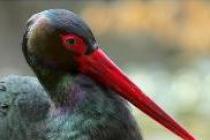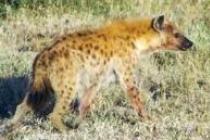Animal behavior
Behavior is the outwardly directed actions of an organism in response to external or internal stimuli. These actions change the relationship of the organism with the environment and ultimately contribute to the preservation of the species. Reactions can be very different: from simple movements towards light to mating games and defense of territory. Behavior is studied by ethology, zoopsychology and other sciences. Currently, modern technical means are often used for this: video and sound recording devices, miniature sensors implanted in the animal’s body, etc.
Behavior can be roughly divided into innate and acquired. In plants, all forms of behavior are innate, while in animals (especially highly organized ones) both types of behavior are visible.
Innate behavior inherited by the body from its ancestors; The simplest forms of innate behavior are orientation, taxis and kinesis. Orientation is a change in the position of individual parts of the body in relation to the support or to each other. Taxis is the directed movement of the entire organism as a whole, caused by an external stimulus. Kinesis, unlike taxis, is an undirected reaction, depending on the intensity of the stimulus, but not on its direction. An example is the behavior of woodlice in a chamber divided into dry and wet halves. Woodlice accumulate in the wet half, thereby exhibiting positive hydrotaxis. On the other hand, if you compare the speed of random movement of woodlice in a dry and wet chamber, it turns out that in the dry half, trying to find more suitable conditions for themselves, they move faster - this is an example of kinesis.
A more complex form of behavior is reflex. An unconditioned reflex is an involuntary stereotypical reaction of the body to an external stimulus, which is inherited. This is, for example, withdrawing a limb from a painful stimulus or a reaction aimed at maintaining balance. Unconditioned reflexes, as a rule, do not require coordination from the brain, but can be modified under its influence; in this case the reflex will be called conditioned.
Instinct is a stereotypical form of behavior that arises in response to certain environmental changes. Instincts are specific to each species. In animals that have a short life span, they are often of predominant importance, but in long-lived species they are no less important. Here are some forms of instinctive behavior:
Aggression is a set of reactions directed against another individual, usually to protect territory, a mate or offspring, or to establish a social hierarchy. As a rule, aggressiveness finds its way out in ritual fights and does not lead to real fights.
Protection of the occupied territory from other individuals of the species. The search for territory is usually carried out by the male; Often he marks the boundaries of his territory, leaving an odorous trail. When strangers move deeper into his territory, the male uses threatening sounds, postures and body movements to scare away; sometimes fights can occur. The weakest individuals often do not receive their territory, which promotes the survival of the strongest.
Displaced activity. Often, during times of stress, an animal begins to carry out activities that are in no way related to the given situation. Thus, a person may bite his nails or drum his fingers on the table during nervous stress. A similar form of behavior also exists when activity is transferred to another object that cannot be a trigger stimulus (for example, irritation against someone who is not the culprit of the events that occurred).
Social hierarchy– arrangement of animals in permanent or temporary communities by rank. Position in the hierarchy depends on the size, strength, endurance and aggressiveness of the animal and is usually established through some aggressive forms of behavior. Social hierarchy reduces the aggressiveness of individuals associated with feeding and reproduction, relieves animals from unnecessary fights and increases the viability of the species as a whole. The term “social hierarchy” can also be applied to human communities.
Public organization- a phenomenon when animals form strong communities (flock, hive, anthill), within which members of the community play different roles. Social organization may be necessary for obtaining food, reproduction, or, for example, protection from enemies and increases the vitality of the community as a whole. This form of behavior is characteristic of some vertebrates (as a rule, individual members of the community can change roles) and social insects - bees, ants and termites, in which the role of the individual is determined by the structure of the body and is “assigned” to it hereditarily (genetically). These insects have a fertile female, several hundred fertile males, and thousands of sterile females (workers).
The response of animals to stimuli is largely dependent on many external or internal factors. Thus, the reaction to food in an animal experiencing hunger will be different than in a well-fed animal. In turn, external danger may force the animal to wait with food until the danger has passed. The combination of such factors is called motivation.
Most animals (with the exception of primitive forms that lack a nervous system) are capable of learning behavior. It is not inherited. Learning is an adaptive change in individual behavior as a result of previous experience. It occurs differently in different species and under different circumstances. Learning can be either short-term or permanent, and its persistence depends on memory - the ability to store and retrieve information from previous experience. Without memory, learning is impossible.
The nature of memory has not yet been revealed. Perhaps the existence of closed circuits of neurons in which excitation can circulate in a circle, thus preserving information, is related to it. However, most researchers are inclined to believe that information can only be stored for a short time in such systems. Impairment of short-term memory can occur as part of aging or after a concussion. According to another hypothesis, memory, especially its long-term component, is associated with stable biochemical changes in the brain, which is confirmed by the introduction of nervous tissue of trained animals into the brain of untrained animals (this reduces the learning time). Apparently, memory is a combination of both the listed mechanisms and others, about which we have a very vague idea.
The following forms of learning can be distinguished:
Habituation is the extinction of a response to a repeated stimulus that is not reinforced by reward or punishment;
- conditioned reflex(classical conditioning) – development of a reaction not only to an unconditioned stimulus, but also to a conditioned one that appears in combination with it;
- learning through trial and error– teaching animals, when after a certain action they are offered a reward or punishment; the combination of such an action with an “assessment” increases or decreases its likelihood in the future;
Imprinting (imprinting) is the memorization by an animal at certain periods of its life (usually in childhood) of the behavior of other individuals (usually parents) and then performing these actions independently;
- latent learning– research into a new situation, which is not immediately necessary now, but will be of vital importance in the future;
Insight (comprehension) is the highest form of learning, based not on trial and error, but on information obtained previously. Possible only with a high level of development of mental abilities. An example among animals is the use of objects by monkeys to obtain food (usually preceded by some period of “thinking”).

Go to the section table of contents: Types of behavior
Animal behavior: types, approaches, concepts
Modern animal behavior research employs a much wider range of approaches and concepts than the early ethologists could have imagined. The most important directions at present are the following.
Phylogeny of behavior. Probably the closest thing to traditional ethology is the study of phylogenetic, i.e. evolutionary aspects of animal behavior. Since fossil remains allow us to draw only purely indirect conclusions in this sense, it is practically impossible to draw parallels on their basis between the evolution of structures and instincts. However, ethologists believe that definite conclusions can be drawn through a comparative study of the behavior of closely related animal species. This approach is based on two assumptions: first, within a given systematic group, instincts may evolve faster in some species than in others; second, certain aspects of instinctive behavior may evolve more rapidly in some species than in others. As a result, when considering several taxonomically related living species, both “primitive” and “advanced” behavioral traits can be observed. By studying the first, less specialized ones, one can understand the origin of evolutionarily more advanced characters characteristic of other species and trace trends in the phylogenetic development of behavior, called ethoclines. Aethoclines are in principle analogous to trends in anatomical specialization that can be observed in fossil animal skeletons.
Comparative studies of this kind have provided, for example, data on the evolution of the famous “dancing” of honey bees, a relatively late-developing type of behavior. These “dances” serve to convey information to other workers about the direction to the food source and the distance to it. Some primitive tropical bees, in which such “dances” are not observed, communicate similar information to their relatives, using marks left between the food source and the colony, or making sounds of a certain duration - the longer they are, the farther from the nest to this source. By studying these simpler modes of communication, zoologists are able to get closer to understanding the complex “dances” of the honey bee. See also BEES.
Communication. Although most people think of communication as mainly verbal communication, i.e. the exchange of sound signals, the generation and reception of the latter is just one of the information channels used by animals. There are other fundamental differences between human communication and the communication of other animals. For example, most communication interactions in animals are formed not in the process of learning, but on the basis of a combination of the innate abilities of some individuals to transmit vital information, and others to respond adequately to it. A classic example of this kind is the interaction of adult herring gulls with their chicks. The newly hatched chick instinctively pecks at the red spot near the top of the parent's beak. This reaction serves as a stimulus for the adult gull to regurgitate partially digested food into the chick's mouth. Here we have an example of a two-way exchange of information, i.e. communication using signal stimuli.
Not only auditory, visual and tactile, but also chemical stimuli play a major role in animal communication. They can spread in air or water and are perceived by the olfactory and taste receptors, respectively. In any case, the release of substances of different chemical nature makes it possible to transmit a wide range of specific messages.
Many chemical signals serve to attract its relatives to an individual. In particular, highly specific substances called sexual attractants are widely used to attract a sexual partner during the breeding season. Such chemical agents, secreted by animals in order to change the behavior of other individuals of their species, are sometimes considered as external hormones. They are called pheromones.
Pheromones often play a huge role in the life of animals, for example lower invertebrates, which are not able to produce and perceive sound signals or use vision. Unlike optical and acoustic stimuli, chemical ones can act with equal effectiveness in water and in air, in the dark and in light. It is also important that they persist for some time after the animal has stopped generating them. As a result, pheromones are especially useful for marking the territory occupied by an individual or group.
Some chemical signals are used primarily for interspecies communication. For example, the disgusting smell of the liquid sprayed by skunks repels people, dogs and many other potential enemies of these animals. The aroma of flowering plants attracts pollinating insects. This is also an example of interspecies chemical communication. Substances secreted by an individual in order to change the behavior of representatives of another species are called allomones.
Ecological adaptations. One of the directions of modern ethological research is the study of behavioral adaptations associated with the ecology of the species, i.e. its interaction with its environment. Of course, for this it is necessary to observe the animal in its natural environment.
Each species of animal, like humans, has a very specific living space and a very specific “profession,” which are called habitat and ecological niche, respectively.
A niche is a set of interacting anatomical, physiological and behavioral adaptations. A species' niche is strongly influenced by the presence of other species with very similar life strategies. One of the currently actively developing areas of ethology is the study of behavioral adaptations of species with partially overlapping ecological niches. Scientists are seeking to understand what mechanisms in natural environments minimize competition between such species for shared resources.
Ontogenesis of behavior. The behavior of an individual begins to develop from the moment it is born and consists of the gradual acquisition of adaptive skills useful for individual survival. Research into these processes is carried out using both psychological and ethological methods, and it is difficult to draw a clear line between them. By studying the ontogenesis of behavior, scientists are often able to distinguish between innate instincts, independently acquired skills and behavioral characteristics that have developed during social interactions. The self-learning of an individual cannot be prevented, however, the influence of relatives on it can be eliminated or controlled in experiments with isolation, when the researcher himself determines the degree and time of communication of the experimental animal with certain representatives of the species.
Imprinting. The concept of imprinting, or imprinting, was formulated by Lorenz as a result of his study of the ontogenesis of chick behavior. We are talking about the tendency, characteristic of newly born cubs of some species of birds, for example geese, (as it later turned out, and mammals), to recognize as their parent any suitable object that they see in the first days of life, and then, as far as possible, everywhere after follow them. Moreover, the type of object “imprinted” as a parent can vary widely - there are very few restrictions in this regard. Chicks can develop such imprinting on other species, including humans, and even on inanimate objects.
However, cubs still have an innate predisposition to imprint signals emanating from adults of their own species. The strength of imprinting is usually measured by the intensity of the response to follow the parent object. Once it is “imprinted” on an animal, it is difficult, but still possible, to achieve a similar imprint on another object.
Motivation, emotional behavior and learning. Experimental studies of learning through the development of classical (Pavlovian) conditioned reflexes, the trial and error method, and teaching machines continue to be carried out mainly by animal psychologists. However, they are looking for answers to questions related to other types of motivated behavior together with ethologists. Motivations can be analyzed by changing, say, stimuli in the external environment and observing corresponding changes in the behavior of the object being studied. For example, a fellow animal is placed in a cage with an experimental animal. The behavior of the object in this case may change depending on a number of factors, in particular the sex of the planted individual, the physiological state of both individuals, etc. Behavioral changes are also observed when external conditions are constant. They can be caused by a weakening of motivation, for example, as a result of habituation to an initially frightening stimulus that turns out to be harmless. Thus, a model of a predator (for example, a stuffed hawk) placed in a cage with small birds causes an immediate but quickly passing avoidance response. When panic, despite the presence of a given stimulus, subsides, we can say that the animals have become accustomed to it.
Ethologists distinguish three main categories of emotional behavior: attack-threat, avoidance-fear, and sexual reactions. The first two categories are interconnected by an inverse interdependence: as the tendency to attack an object increases, fear of it weakens. This spectrum of opposing motivations and associated actions is collectively called agonistic behavior. Often, by the actions of an animal, one can quite accurately determine its internal agonistic state, or motivation. Indeed, many species-specific movements and postures (displays), such as raising the tail of a disturbed skunk, appear to have evolved to provide easily discernible signals that unambiguously reflect the internal state of the animal, in particular its readiness to attack or flee. Such demonstrations usually avoid unnecessary fights.
Unlike agonistic behavior, sexual motivation does not appear to have any alternative resolution, but simply increases or decreases in direct proportion to fluctuations in the level of sex hormones in the blood. Interestingly, in birds and mammals, an increase in the concentration of male sex hormones, along with sexual desire, also increases aggressiveness. Such a relationship can be beneficial for the species, since reproductive success often depends on the male’s ability to defend his territory.
These types of motivated behavior and some other innate motor reactions, such as those that provide nutrition, correspond to clearly localized centers of nervous regulation in the brain. They are located around the hypothalamus and in a number of adjacent areas. Electrical stimulation of individual cells causes a strong motor response, and injection of sex hormones into these centers can induce characteristic sexual behavior.
The content of the article
ANIMAL BEHAVIOR. Traditionally, animal behavior has been studied by psychologists using laboratory animals, such as rats, under conditions that allow them to fully control the information they receive and their ability to learn. The psychological approach underestimated innate reactions independent of experience. In addition, those types of behavior that serve as an adaptation of the species to its typical natural environment and are not always manifested in a laboratory setting were usually not taken into account. These two shortcomings were overcome by zoologists of the post-Darwinian era, who began to study animal behavior from an evolutionary point of view.
The main change was that the behavior of animals began to be considered as one of the characteristics formed in the process of natural selection, along with the anatomical and other hereditary characteristics of a particular species. Animal evolutionary psychologists have put forward the idea that instinctive behavior is determined by a special type of innate programs, more complex than reflexes, i.e. simple reactions to stimuli. They found out what receptor mechanisms associated with tactile, gustatory, olfactory, visual, etc. structures that are usually involved in the perception of stimuli that trigger one or another type of instinctive action, and what complex motor coordination is necessary to perform the latter. It has been found that environmental stimuli that cause an instinctive response are usually more complex than those that cause a reflex response, and are usually represented by a combination of optical, sound and chemical stimuli. Finally, a hypothesis emerged according to which, in order to perform a certain instinctive action, an animal needs a corresponding internal state, called motivation. To avoid anthropomorphism, a theory has been proposed that explains instinctive reactions from a more or less mechanistic point of view.
Works by Lorenz.
This theory was proposed in the mid-1930s by the Austrian zoologist K. Lorenz. In his opinion, animal instinct contains an innate hereditary basis, called a complex of fixed actions (CFA). A species can have a huge number of such QFDs, and many of them are unique to it, i.e. species-specific. Species-specific features are especially characteristic of sexual behavior, since, together with unique anatomical, physiological and cytological characteristics, it is designed to ensure that the animal mates only with its own kind.
Lorenz further suggested that QFD is the result of physiological and motor reactions triggered by the corresponding centers of the nervous system. For each QFD, he postulated the existence of a special center in which a specific action potential could accumulate. The latter can be considered as an inclination or tendency to commit a certain behavioral act. When it is executed, some part of the action potential is spent. The continued realization of this potential is hampered by a certain restraining force. Lorenz called it the innate trigger. This mechanism not only prevents the continuous execution of a behavioral act in the absence of sufficient stimulation, but also contributes to the gradual accumulation of a specific action potential.
Finally, according to Lorenz's theory, an external signal stimulus, such as a sound, smell, or visual image, contains “permissive” characteristics that can activate an innate trigger. The result of this activation is the QFD. For example, a worker honey bee flies out to forage when it has formed a specific action potential for collecting pollen. The color, shape and smell of certain flowers serve as signal visual and chemical stimuli for the bee, which “resolve” FDC, i.e. planting on the corolla and collecting pollen.
Most of the types of instinctive behavior that Lorenz studied are associated with social interactions in which a series of QFDs of different individuals are induced, or “triggered,” in a certain sequence that serves to perform some specific function. For example, the first FDC of one individual can play the role of a signal stimulus and cause the corresponding FDC of a partner, etc. Such interaction results in a complex, sometimes quite lengthy ritual, leading to a biologically significant result, such as fertilization. Examples of such interdependent alternation of QFDs are provided by the so-called. mating displays in fish (sticklebacks) and birds (ducks).
Modern animal behavior research employs a much wider range of approaches and concepts than the early ethologists could have imagined. The most important directions at present are the following.
Phylogeny of behavior.
Probably the closest thing to traditional ethology is the study of phylogenetic, i.e. evolutionary aspects of animal behavior. Since fossil remains allow us to draw only purely indirect conclusions in this sense, it is practically impossible to draw parallels on their basis between the evolution of structures and instincts. However, ethologists believe that definite conclusions can be drawn through a comparative study of the behavior of closely related animal species. This approach is based on two assumptions: first, within a given systematic group, instincts may evolve faster in some species than in others; second, certain aspects of instinctive behavior may evolve more rapidly in some species than in others. As a result, when considering several taxonomically related living species, both “primitive” and “advanced” behavioral traits can be observed. By studying the first, less specialized ones, one can understand the origin of evolutionarily more advanced characters characteristic of other species and trace trends in the phylogenetic development of behavior, called ethoclines. Aethoclines are in principle analogous to trends in anatomical specialization that can be observed in fossil animal skeletons.
Comparative studies of this kind have provided, for example, data on the evolution of the famous “dancing” of honey bees, a relatively late-developing type of behavior. These “dances” serve to convey information to other workers about the direction to the food source and the distance to it. Some primitive tropical bees, in which such “dances” are not observed, communicate similar information to their relatives, using marks left between the food source and the colony, or making sounds of a certain duration - the longer they are, the farther from the nest to this source. By studying these simpler modes of communication, zoologists are able to get closer to understanding the complex “dances” of the honey bee.
see also BEES.
Communication.
Although most people think of communication as mainly verbal communication, i.e. the exchange of sound signals, the generation and reception of the latter is just one of the information channels used by animals. There are other fundamental differences between human communication and the communication of other animals. For example, most communication interactions in animals are formed not in the process of learning, but on the basis of a combination of the innate abilities of some individuals to transmit vital information, and others to respond adequately to it. A classic example of this kind is the interaction of adult herring gulls with their chicks. The newly hatched chick instinctively pecks at the red spot near the top of the parent's beak. This reaction serves as a stimulus for the adult gull to regurgitate partially digested food into the chick's mouth. Here we have an example of a two-way exchange of information, i.e. communication using signal stimuli.
Not only auditory, visual and tactile, but also chemical stimuli play a major role in animal communication. They can spread in air or water and are perceived by the olfactory and taste receptors, respectively. In any case, the release of substances of different chemical nature makes it possible to transmit a wide range of specific messages.
Many chemical signals serve to attract its relatives to an individual. In particular, highly specific substances called sexual attractants are widely used to attract a sexual partner during the breeding season. Such chemical agents, secreted by animals in order to change the behavior of other individuals of their species, are sometimes considered as external hormones. They are called pheromones.
Pheromones often play a huge role in the lives of animals, such as lower invertebrates, which are not able to produce or perceive sound signals or use vision. Unlike optical and acoustic stimuli, chemical ones can act with equal effectiveness in water and in air, in the dark and in light. It is also important that they persist for some time after the animal has stopped generating them. As a result, pheromones are especially useful for marking the territory occupied by an individual or group.
Some chemical signals are used primarily for interspecies communication. For example, the disgusting smell of the liquid sprayed by skunks repels people, dogs and many other potential enemies of these animals. The aroma of flowering plants attracts pollinating insects. This is also an example of interspecies chemical communication. Substances secreted by an individual in order to change the behavior of representatives of another species are called allomones.
Ecological adaptations.
One of the directions of modern ethological research is the study of behavioral adaptations associated with the ecology of the species, i.e. its interaction with its environment. Of course, for this it is necessary to observe the animal in its natural environment.
Each species of animal, like humans, has a very specific living space and a very specific “profession,” which are called habitat and ecological niche, respectively.
A niche is a set of interacting anatomical, physiological and behavioral adaptations. A species' niche is strongly influenced by the presence of other species with very similar life strategies. One of the currently actively developing areas of ethology is the study of behavioral adaptations of species with partially overlapping ecological niches. Scientists are seeking to understand what mechanisms in natural environments minimize competition between such species for shared resources.
Ontogenesis of behavior.
The behavior of an individual begins to develop from the moment it is born and consists of the gradual acquisition of adaptive skills useful for individual survival. Research into these processes is carried out using both psychological and ethological methods, and it is difficult to draw a clear line between them. By studying the ontogenesis of behavior, scientists are often able to distinguish between innate instincts, independently acquired skills and behavioral characteristics that have developed during social interactions. The self-learning of an individual cannot be prevented, however, the influence of relatives on it can be eliminated or controlled in experiments with isolation, when the researcher himself determines the degree and time of communication of the experimental animal with certain representatives of the species.
Imprinting.
The concept of imprinting, or imprinting, was formulated by Lorenz as a result of his study of the ontogenesis of chick behavior. We are talking about the tendency, characteristic of newly born cubs of some species of birds, for example geese, (as it later turned out, and mammals), to recognize as their parent any suitable object that they see in the first days of life, and then, as far as possible, everywhere after follow them. Moreover, the type of object “imprinted” as a parent can vary widely - there are very few restrictions in this regard. Chicks can develop such imprinting on other species, including humans, and even on inanimate objects.
However, cubs still have an innate predisposition to imprint signals emanating from adults of their own species. The strength of imprinting is usually measured by the intensity of the response to follow the parent object. Once it is “imprinted” on an animal, it is difficult, but still possible, to achieve a similar imprint on another object.
Motivation, emotional behavior and learning.
Experimental studies of learning through the development of classical (Pavlovian) conditioned reflexes, the trial and error method, and teaching machines continue to be carried out mainly by animal psychologists. However, they are looking for answers to questions related to other types of motivated behavior together with ethologists. Motivations can be analyzed by changing, say, stimuli in the external environment and observing corresponding changes in the behavior of the object being studied. For example, a fellow animal is placed in a cage with an experimental animal. The behavior of the object in this case may change depending on a number of factors, in particular the sex of the planted individual, the physiological state of both individuals, etc. Behavioral changes are also observed when external conditions are constant. They can be caused by a weakening of motivation, for example, as a result of habituation to an initially frightening stimulus that turns out to be harmless. Thus, a model of a predator (for example, a stuffed hawk) placed in a cage with small birds causes an immediate but quickly passing avoidance response. When panic, despite the presence of a given stimulus, subsides, we can say that the animals have become accustomed to it.
Ethologists distinguish three main categories of emotional behavior: attack-threat, avoidance-fear, and sexual reactions. The first two categories are interconnected by an inverse interdependence: as the tendency to attack an object increases, fear of it weakens. This spectrum of opposing motivations and associated actions is collectively called agonistic behavior. Often, by the actions of an animal, one can quite accurately determine its internal agonistic state, or motivation. Indeed, many species-specific movements and postures (displays), such as raising the tail of a disturbed skunk, appear to have evolved to provide easily discernible signals that unambiguously reflect the internal state of the animal, in particular its readiness to attack or flee. Such demonstrations usually avoid unnecessary fights.
Unlike agonistic behavior, sexual motivation does not appear to have any alternative resolution, but simply increases or decreases in direct proportion to fluctuations in the level of sex hormones in the blood. Interestingly, in birds and mammals, an increase in the concentration of male sex hormones, along with sexual desire, also increases aggressiveness. Such a relationship can be beneficial for the species, since reproductive success often depends on the male’s ability to defend his territory.
These types of motivated behavior and some other innate motor reactions, such as those that provide nutrition, correspond to clearly localized centers of nervous regulation in the brain. They are located around the hypothalamus and in a number of adjacent areas. Electrical stimulation of individual cells causes a strong motor response, and injection of sex hormones into these centers can induce characteristic sexual behavior.
TYPES OF ANIMAL BEHAVIOR
Its two major categories are quite obvious. The first includes actions performed by animals even in complete isolation to preserve their own life and health. Such “self-directed” types of behavior can be called egocentric. The second category is social behavior, which covers actions induced or performed only in the presence of individuals of one's own or other species. Social behavior includes all types of communication, all forms of sexual contact in animals of different sexes, and all relationships between parents and offspring.
EGOCENTRIC BEHAVIOR
The basis of various types of egocentric behavior is the need for “self-preservation”. These actions are associated with nutrition, removal of waste products, quenching thirst, and in species that breathe atmospheric air, even with breathing. Many of these reactions are reflexive and innate, but they are not usually classified as instincts. In large groups that include many species of animals, these types of behavior are expressed almost identically.
Comfortable movements.
The self-preservation of the individual is associated with actions aimed at caring for the surface of the body, especially in animals covered with hair or feathers. These types of behavior, including grooming (caring for fur), prancing (caring for feathers), scratching, shaking, stretching, licking, bathing, lubricating the integument, etc., are characteristic of all species of birds and mammals. All of these are often nothing more than reflexes or their sequences, which can be fully formed already at the moment the individual is born. However, such “comfortable movements” also play an important role in social behavior: on their basis, motor reactions develop that are used as communication signals, for example, during mating or threatening displays. When an angry bull digs the ground with its hooves, a sexually excited bison rolls in the mud, or an aggressive cat twitches its tail, we see an imitation of precisely comfortable movements that have acquired completely different functions in a social setting.
Foraging and exploratory behavior.
Foraging, i.e. obtaining food and research activities also relate to egocentric behavior. They depend on the habitat characteristic of the animal, the physical ability of the individual to perform locomotor and other movements, as well as on its sensory abilities to detect changes in the environment. Using available means, an animal can seek shelter and, in some cases, even build temporary or permanent housing - nests, burrows, anthills, etc. The search for shelter by individuals of the same species often leads to their concentration in the most suitable places, which stimulates the formation of flocks, herds, shoals and other groups.
SOCIAL BEHAVIOR
When animals stick together, purely social behaviors inevitably emerge, since the effective functioning of the group is impossible without them. The most important types of social behavior include the following.
Contagious behavior.
As the name suggests, contagious behavior is initiated by one member of a group and quickly spreads to the entire group, leading to coordinated action. For example, in many species, when a predator appears, the first animal to notice it gives off alarm signals, which are instantly picked up by all the others and cause the group to flee. If the enemy is not too dangerous, animals often use equally contagious mobilizing signals that stimulate the organization of collective resistance to the enemy.
Agonistic reactions.
Agonistic types of social behavior in animals include a wide range of reactions from attack-threat at one pole to avoidance-fear at the other. For such behavior to be effective, individuals must at least be able to distinguish their congeners from members of other species. In addition, it is useful to recognize the gender of other individuals and to know all members of one's social group. Only under such conditions is it possible to form effective social relationships based on social dominance. For example, the well-known “pecking order” in birds is the result of the fact that members of a flock occupying a subordinate position recognize those members of the flock who, through their aggressiveness, have already achieved dominance, and give them food, thereby preventing conflicts that are disadvantageous for the group as a whole. Otherwise, it would be unstable due to constant fights associated with the conquest and confirmation of each individual’s social status. In a similar way, when establishing the boundaries of individual territories, members of a social group divide the habitat it occupies into areas within which only one host individual dominates. Outside its territory, this animal usually automatically recognizes its subordinate position in relation to the owner of the site.
Reproductive behavior.
The most complex and important type of social behavior in animals is related to reproduction. Indeed, the survival of a species depends precisely on the successful reproduction of its individuals, and many behavioral adaptations have evolved to ensure this process.
The complexity of reproductive behavior in a given species correlates with the need of the young for parental care. In most fish, for example, fertilization is external, and these species do not care about the eggs and fry after spawning. Accordingly, their reproductive behavior is quite simple and is limited to the simultaneous release of eggs and sperm into the water. For many birds the situation is completely different. The matter is by no means limited to fertilization itself: it is necessary to build a nest, protect and incubate the eggs, protect, feed and teach the chicks. Males and females of species whose growing offspring require intensive care often form strong pairs that do not break up throughout the entire breeding season. In this case, reproductive behavior can be divided into several components, the main of which are mating, or sexual, behavior (including courtship itself, leading to the formation of a pair, and actions that ensure fertilization) and parental behavior (carrying out parental responsibilities). Each of these phases of reproduction is regulated by specific hormones and signaling stimuli, for example, the availability of a suitable site for a nest, the presence of eggs or chicks in the nest, etc.
Encyclopedic YouTube
1 / 2
✪ Mating behavior of animals. Lesson 1.5. Sexual strategies of males and females in different groups of animals
✪ Mating behavior of animals. Lesson 1.7. Reproduction system and social structure of populations. Part 1
Subtitles
Terminology
The separation of sexual behavior from reproductive behavior is not possible in all animal species. Not all researchers recognize the presence in animals of sexual behavior that is different from reproductive behavior (aimed at the reproduction of offspring).
The term “sexual behavior” is characterized by a high degree of uncertainty: sexual behavior most often includes behavioral acts directly related to fertilization, but often also includes complexes of fixed actions associated with the choice of a sexual partner and care for offspring (mating and nest-building behavior) and acts of protection territories of reproductive groups (territorial behavior).
Anthropocentrism and speciesism in studies of animal sexual behavior
Additional complexity is introduced by anthropocentric interpretations of various species-specific behavioral complexes of sexual and reproductive behavior (attempts to describe the sexual behavior of animals in human terms). There is no consensus among researchers on the question of whether an animal's sexual behavior that is not aimed at reproduction is a variant of the species-specific norm or a deviation from the norm (that is, only behavior aimed at reproduction is normal). There is also no consensus on whether non-reproductive sexual behavior exists in animals at all or whether it is an artifact (for example, observed only in artificial conditions, in captivity, or due to the hypersexuality of the animal, or the inability to distinguish between suitable and inappropriate sexual objects - undifferentiated sexual behavior, or the supposed “sexual” behavior is actually the establishment of relations of dominance and submission in the pack, etc.).
In turn, those researchers who recognize the possibility of the existence of non-reproductive sexual behavior in some animal species and the possible variability of the norms of sexual behavior of animals respond to accusations of anthropocentrism with a counter-accusation of “specieism” (en: Specieism, a term coined by R. Ryder in 1973 ), that is, “speciesism”, “species chauvinism”, a biased approach expressed in the simplification and reduction of all animal activities to instinctive acts, underestimation of their intellectual and emotional capabilities, etc., as well as in biological heteronormativity (en: Heteronormativity) - the initial assumption that only and exclusively heterosexual sexual activity is normal in the animal world.
Observed phenomena and their interpretations
Researchers have observed in different animal species the phenomena of monogamy, polygamy, promiscuity, interspecific copulation, sexual arousal from objects or places, forced copulation (“rape”), copulation with members of the same, opposite or both sexes, attempts at copulation with inanimate objects, copulation with the dead animals, situational sexual behavior and a number of other phenomena. Explanations for these phenomena vary among different researchers, and not everyone recognizes their very existence.
At the same time, in periodicals and popular publications, journalists interpreted these findings as the existence of “fetishism in animals,” “necrophilia in animals,” “homosexuality and bisexuality in animals,” etc. The researchers themselves often objected to this interpretation of the results of their research.
The study of animal sexual behavior (and especially primate sexual behavior) is a rapidly developing area of scientific knowledge. Previously, it was generally accepted that only humans and some other species of animals tend to perform sexual acts not for the purpose of reproduction (reproduction of offspring), and that the sexual behavior of animals is entirely instinctive and a simple response to the “correct” sexual stimuli (smell, the sight of an opposite object). gender, sounds made by the object, specific behavior of the object, etc.). Current knowledge suggests that many species previously thought to be strictly monogamous are now proven to be polygamous or prone to promiscuity or opportunistic, opportunistic sexual behavior. Also, a significant number of animal species can masturbate and/or use various objects for the purpose of masturbation. In many animal species, attempts to give or receive sexual gratification appear to be possible in cases where reproduction was obviously not the goal. Homosexual behavior has now been observed in 1,500 animal species and is well documented in 500 of them.
Politicization of the issue of animal sexual behavior
The question of whether this or that sexual behavior exists in animals has recently become the subject of journal and political speculation. Thus, some activists of the LGBT movement use the presence of elements of homosexual or bisexual behavior in some animal species as one of the arguments in the dispute about the biological and social normality of homosexuality and bisexuality in humans. Activists of the “free love” movement use as one of the arguments in the debate about the monogamy or polygamy of human nature and the admissibility of “free love” the fact that in many animal species previously considered monogamous, in reality there is no strict sexual monogamy, extramarital sexual behavior is common , polygamy or promiscuity. Zoophiles, as one of the arguments confirming their point of view that bestiality does not necessarily involve cruelty to animals, cite facts indicating that some animals themselves can show sexual interest in humans or are capable of non-reproductive sexual behavior and, may apparently be able to “experience pleasure” (in the sense that animals have emotions) from sexual activity.
On the other hand, the opposite point of view, which has been dominant for a long time, is that all sexual activity of animals is aimed exclusively at reproduction, is of a simple and instinctive nature, and that such phenomena as homosexuality and bisexuality are purely human, and in animals they represent an artifact or, for example, a consequence of an animal’s hypersexuality, has been and continues to be used as an argument about the “unnaturalness,” unnaturalness, and abnormality of homosexual relations in humans.
A scientific view on the problem of the sexual behavior of animals is based on a correct, free from bias, description of the observed facts, while certain facts about the sexual behavior of animals cannot be directly transferred to humans and therefore are not the basis for certain political conclusions. The question of the normality or abnormality, social acceptability or immorality of certain types of sexual behavior in humans is proposed to be resolved separately from the question of whether such behavior exists in certain animal species, what causes it and whether it is an evolutionarily beneficial species-specific norm or a deviation from the norm.
Marriage systems
In the sociobiology and ecology of animal behavior, the term mating systems is used to describe the ways in which communities of animals of the same species (herds, packs, or other discrete populations) are structured with respect to sexual behavior. The mating system characteristic of a given animal species determines which males of that species fertilize which females and under what conditions.
The following are some of the mating systems known and described in humans and other animals.
Comparative analysis of animal sexual behavior
Comparative studies of sexual behavior in different species allow us to trace the evolution from the simplest behavioral acts in animals to human sexual relations (Pfaus J. G., Kippin T. E., Coria-Avila G., 2003). In all species, sexual behavior is regulated by steroid hormones. Animal research was initially limited to copulation, but more recent work has identified many behaviors similar to human sexual behavior. A comparative analysis of the neurochemical and neuroanatomical mechanisms of sexual behavior shows that many of them have not changed during the process of evolution.
The pioneer of comparative analysis was Beach (1950), who founded the neuroendocrinological approach to the study of sexual characteristics of animals. In the early 1990s, two camps emerged: medical scientists who studied humans, and neuroendocrinologists who studied animals. These groups of scientists initially interacted weakly. The search for general approaches began with pharmacological studies. For example, dopamine agonists have been shown to cause erections in both humans and rats (Lal et al., 1987), and dopamine antagonists have been shown to reduce sexual function in both (Petrie, 1985). From this it was concluded that similar parts of the brain control sexual behavior in different species.
Sexual behavior of different species has common features. Common features include the ability to respond to neurochemical agents that induce and maintain sexual desire and arousal. There are also common features in identifying and responding to sexual stimuli. The feeling of satisfaction from sexual intercourse also has similar features across species.
It happens that the sexual behavior of animals is controlled by symbionts, for example, fruit flies living for several generations on one type of food prefer to mate with fruit flies that lived on the same type of food, and selectivity is controlled by bacteria














